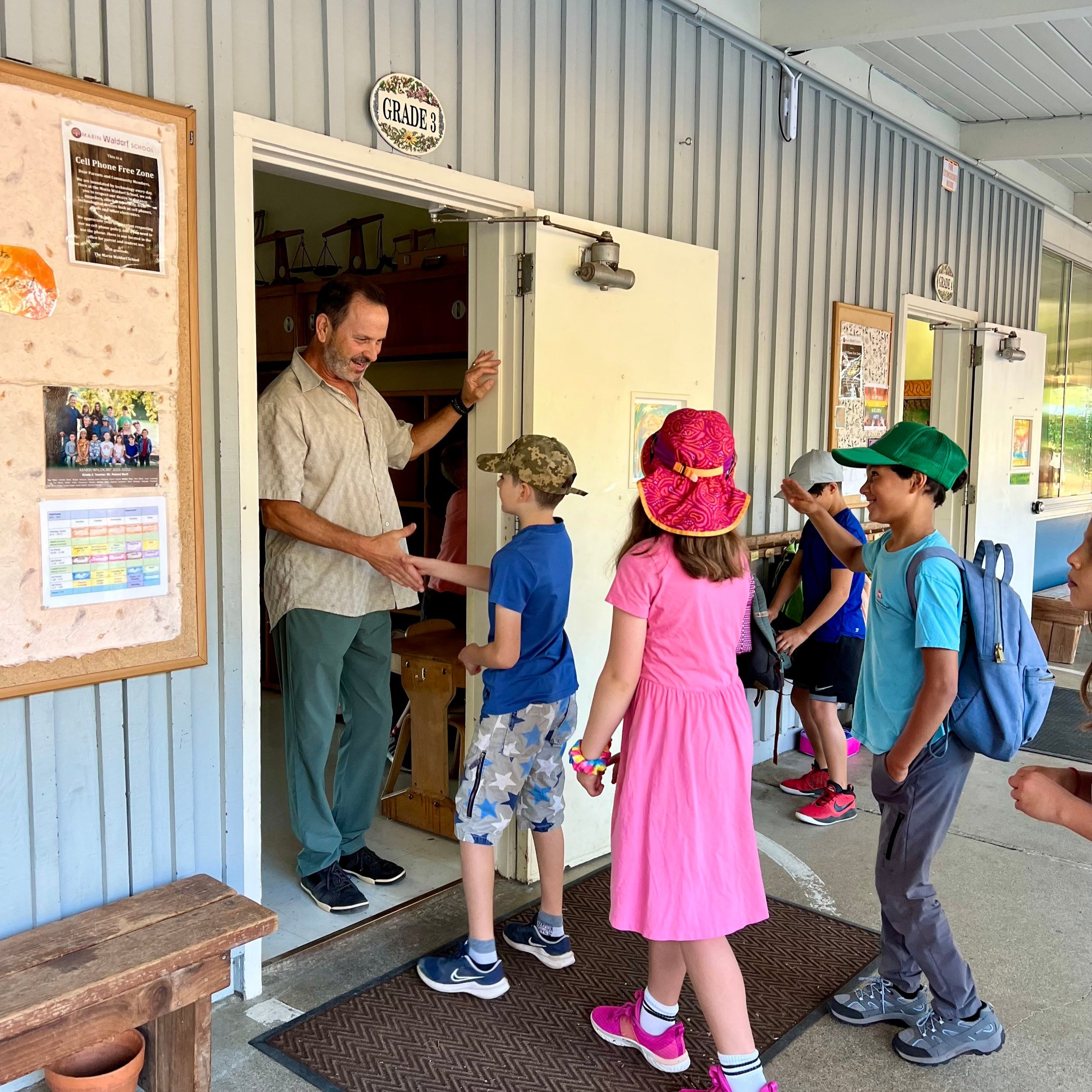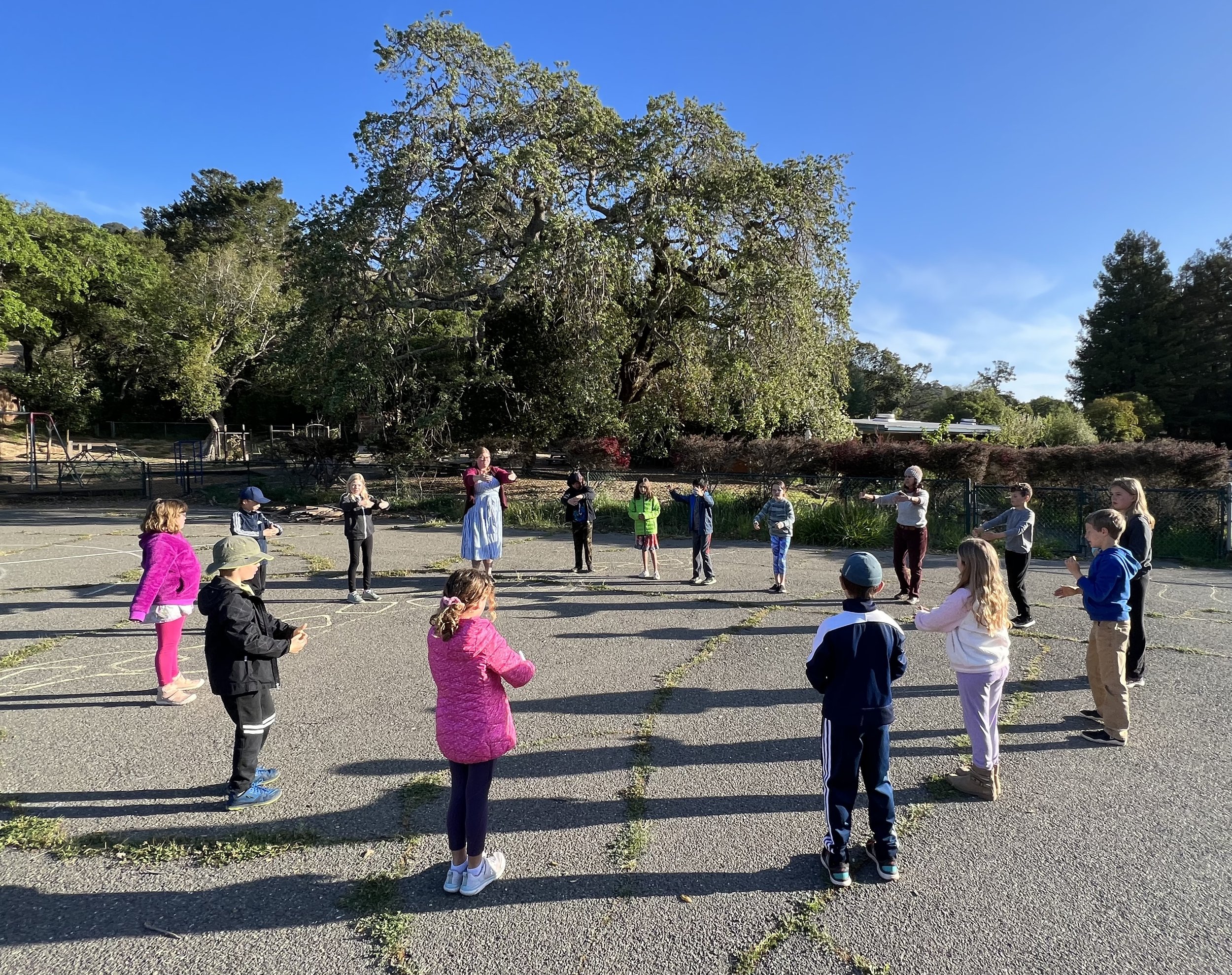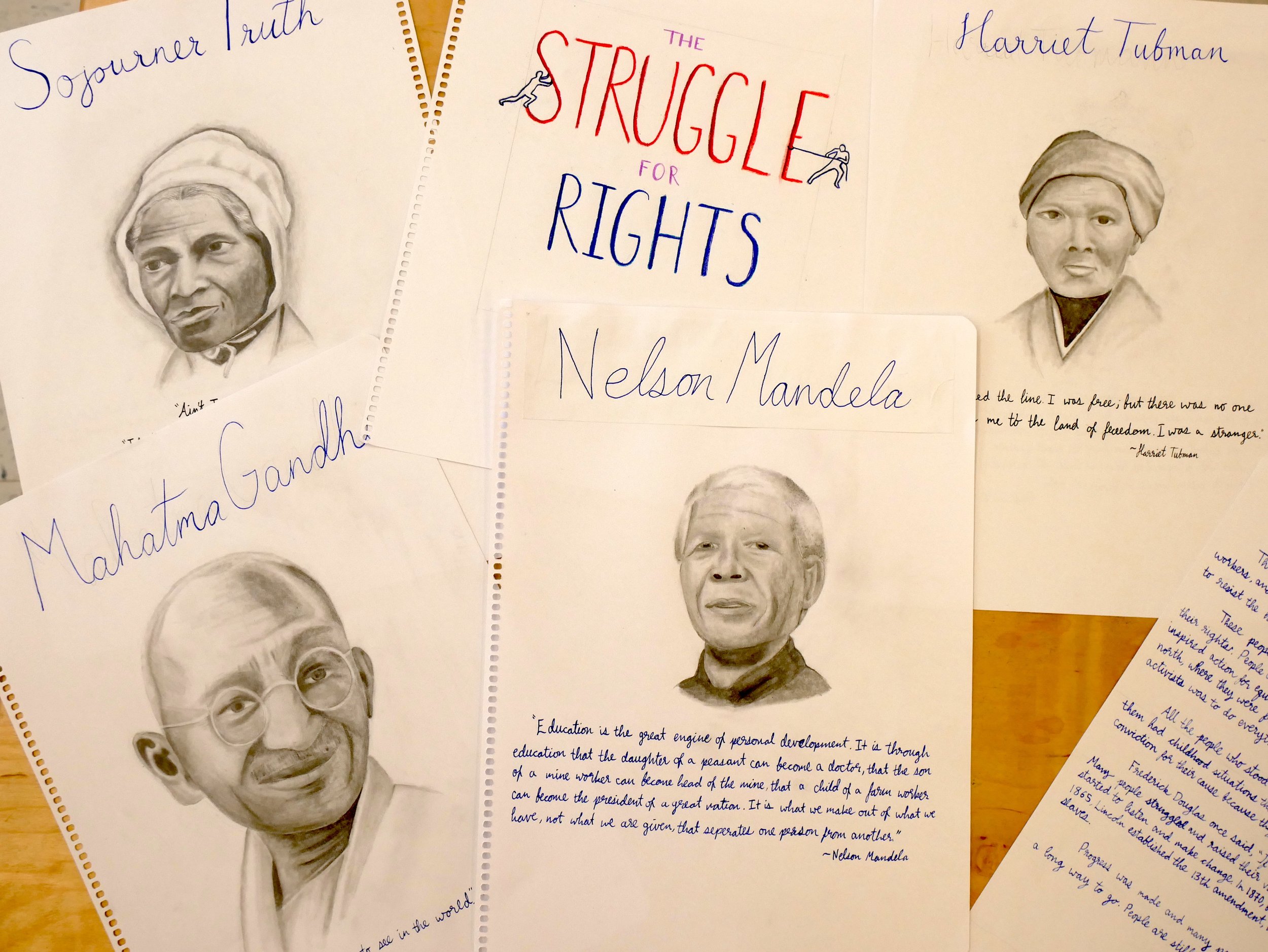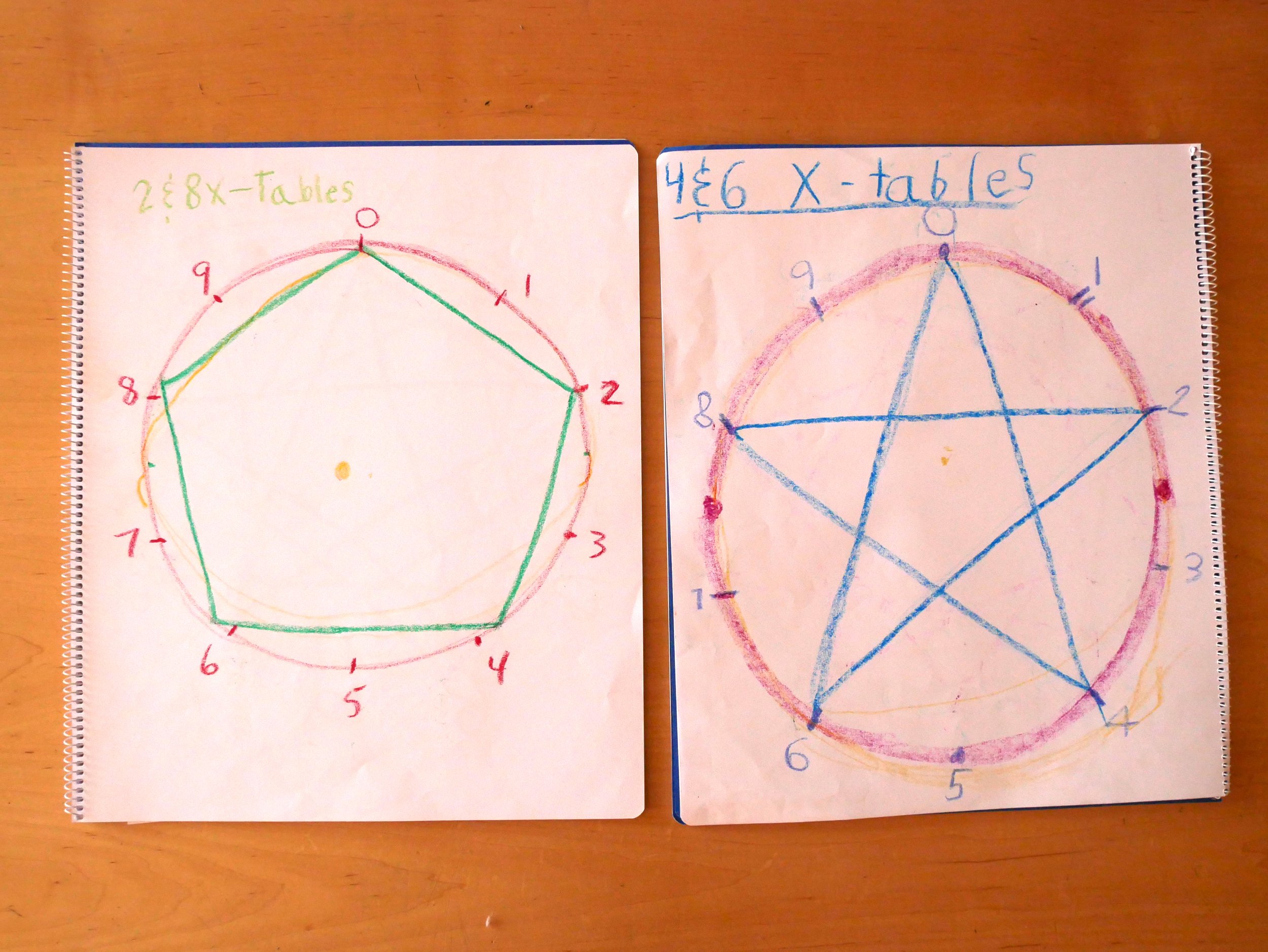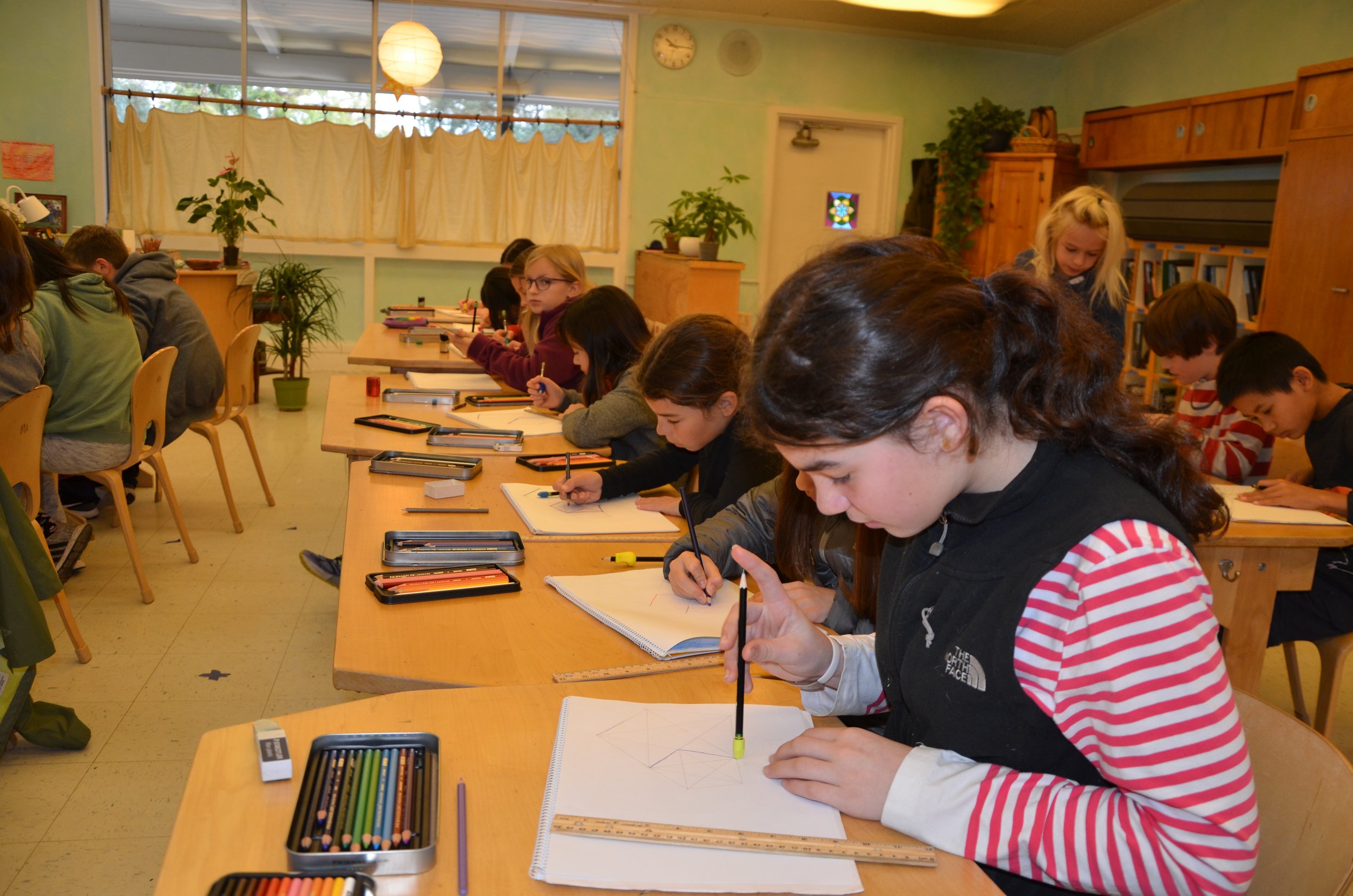What Is Main Lesson?
Innovative teaching practices enrich learning at Marin Waldorf School
Mornings at Marin Waldorf School always begin in the same way: The bell rings, classroom doors open, and teachers step outside to greet each of their students with a handshake. Then a hush falls over the school as main lesson begins.
Main Lesson: A Multisensory Approach to Teaching
Main lesson is an intensive two-hour class that begins the school day for students in grades 1 to 8. It is taught first thing the morning, when children’s minds are most receptive, alert, and able to concentrate on complex topics. On most days, the class time is centered around a single subject in the curriculum, which teachers approach through a range of multi-sensory activities that engage the head, heart, and hands.
Every class teacher has their own unique approach to main lesson, which may begin with a song or a verse, stretches, or a morning warmup outside. After that, each lesson includes three main parts: something new, something reviewed, and something to do. These parts may be approached through a blend of instruction, book work, group projects, games, recitation, movement, singing, art, and discussion.
Art, movement, song, and rhythm are not just enriching elements of Waldorf education—they are powerful tools for encoding new ideas. Encountering concepts through multiple modalities fosters nuance and deeper understanding, reinforcing learning in a meaningful way. Through varied activities, teachers to cater to different learning styles while simultaneously keeping children engaged in learning throughout the morning.
Instructional responsiveness is at the heart of this approach, prioritizing student thinking over rigid instructional sequences. Lessons evolve based on student engagement, ensuring that learning remains dynamic and relevant.
Handmade Lesson Books
While every classroom has its own library and reading spaces, you won’t find textbooks at Marin Waldorf School. With the teacher’s guidance, students create their own handmade lesson books, with illustrations and summaries of the material presented in class. Below, you can see two examples of main lesson book pages from blocks on the Struggle for Rights (8th grade) and Patterns in Math (2nd grade).
The creation of a main lesson book is one of the ways Waldorf teachers incorporate art, creativity, and meaning into academic coursework, encouraging recollection and a personal connection to the material. In a Waldorf school, children don’t reference textbooks to remember their lessons, but their own handmade work.
Block Schedule
In grades 1-8, the core curriculum is divided into blocks of 2-4 weeks. During each block, the whole class focuses on a single topic in the curriculum. At any given time on the Marin Waldorf School campus, 2nd graders might tackling word problems in a math block on place value while 4th graders study Norse mythology and 7th graders delve into combustion during a chemistry block.
With ample time and space to explore each topic, blocks allow teachers to provide additional challenge or extra support to students, as needed. Learning to persevere through a challenging topic—even when it doesn't come naturally—builds confidence, resolve, and growth mind-set in our students.
Arts Integration
Creating main lesson books is one of the many ways that teachers incorporate creativity and artistic expression into the academic curriculum. Throughout elementary and middle school, art is integrated into every subject at MWS. Why? Because art helps students build a personal connection to the material and boosts retention of that material over time. Art naturally promotes observation, creativity, and innovation. And art teaches students to approach their work with close observation, detail, and care— qualities that will serve them in advanced-level academics in high school and beyond.
Interdisciplinary Learning
Here, math, science, language arts, social studies, art, and music aren’t taught as discrete topics, but thoughtfully intertwined to promote critical and creative thinking across disciplines. The block schedule gives teachers the time and space to take a rich multidisciplinary approach to each topic, promoting a deeper understanding and connection to class material.
For example, in the 5th grade botany block, students delve into the world of plants through instruction in the botanical life cycle, observation and schematic illustration, and hands-on and experiential work in the school garden or hiking in the open space. In addition to instruction during main lesson, grades students take afternoon track classes in math and language arts, giving their essential skills a boost.
Double Doses of Math and Literacy
Core skill-building in language arts, math, visual art, and social-emotional learning are integrated into every block, allowing students to build essential academic skills across subject areas. That means that math and literacy skills are taught in context, a more engaging approach for most students.
At the same time, we bolster student learning through math and language arts track classes in the afternoons. These skill-focused classes start in 1st grade and continue though middle school, ensuring students are receiving a sold foundation before moving onto more complex academic subjects in middle school and high school.
Looping
When it comes to building strong teacher-students relationships, one of the most important innovations in Waldorf education is looping. Looping is when a teacher stays with the same class for multiple years or grade levels. In some cases, MWS class teachers will stay with the same group of students all the way from 1st to 8th grades! Our school’s specialty teachers also work with the same children year after year, creating the same sense of support and continuity in subject classes like music, handwork, gardening, orchestra, physical education, woodworking, and middle school math. Read more about looping here.
A Balanced Day
Just like our curriculum as a whole, every school day is carefully planned to alternate between activities that require concentration and focus and activities that encourage social interaction and joy. Alternating between these activities helps students stay engaged and on task, develop different skill sets, and, best of all, enjoy a school day that meets their physical, social, and emotional needs.
